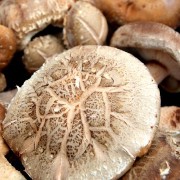 Photo: Getty Images
Photo: Getty Images
Wheat allergy is one of the more common food allergies for children. Approximately 1 percent of children in the United States develop an allergy to wheat. The good news is that most children will outgrow this allergy – some by the age of 7 and most by the age of 14. Wheat allergy is less common in older children and adults.
What is a food allergy?
A food allergy is caused by an abnormal reaction by the body’s immune system. When you eat something that causes an allergic reaction, that food is known as your allergen. Normally, the body’s immune system reacts to harmful substances such as bacteria or a virus by producing antibodies that are specifically targeted at that substance. In the case of food allergy, the body produces antibodies targeted at the allergen.
Wheat allergy is sometimes confused with celiac disease. While both conditions are reactions to wheat, celiac disease is not a food allergy. It is a digestive reaction to proteins including gluten that are found in a variety of grains including wheat. People with celiac disease have more dietary restrictions than people with wheat allergy.
Wheat allergy symptoms
When a food allergen is detected in the body, antibodies swarm to it and attack it. This can cause a variety of symptoms including swelling and itching around the mouth, hives, runny nose, nausea, diarrhea, and vomiting. Wheat allergy also tends to cause some of the most serious allergic reactions which include asthma attacks and anaphylaxis. Anaphylaxis is a full body reaction that causes blood pressure to drop and airways to swell, which can make breathing difficult to the point that it can be deadly.
The only way to avoid an allergic reaction to wheat is to not eat wheat. This can be a difficult task since wheat is found in so many of the processed foods we commonly eat. The good news is that because so many people have wheat allergy, most large grocery stores have a variety of wheat-free alternatives for many products.
In addition to basic wheat, avoid foods that contain wheat berries, wheat bran, wheat germ, and wheatgrass. Here are some other foods to avoid:
• Flour or any baked good containing flour. This includes bread flour, cake flour, enriched flour, graham flour, and all-purpose flour. Flour made from other grains such as corn, millet, or rice is generally okay to eat.
• Pasta including gnocchi, spaetzle, chow mein and lo mein noodles, and filled pastas. Substitute rice noodles, pure buckwheat soba noodles, and other pastas that are wheat-free.
• Soups, gravies, and sauces – flour is often used as a thickening agent.
• Breaded meats or vegetables including fried chicken and zucchini or okra.
• Dumplings, meatballs, lunch meats – bread crumbs are often used to help these foods stick together.
• Beer
• Condiments including salad dressings and Worcestershire sauce
Read the labels
As with any food allergy, learning to read the ingredient label on the foods you purchase is a skill you will need to master. Because wheat is one of the top eight food allergies in the United States, the Food and Drug Administration requires all food manufacturers to clearly label any product containing wheat. It is up to you to think about opportunities for cross-contamination when wheat-free foods could come in contact with foods or other products containing wheat. Be wary of foods that are processed in the same plant or packaged on the same line with foods that contain wheat.
Sources:
About.com: Wheat Allergies
Mayo Clinic






Add a CommentComments
There are no comments yet. Be the first one and get the conversation started!